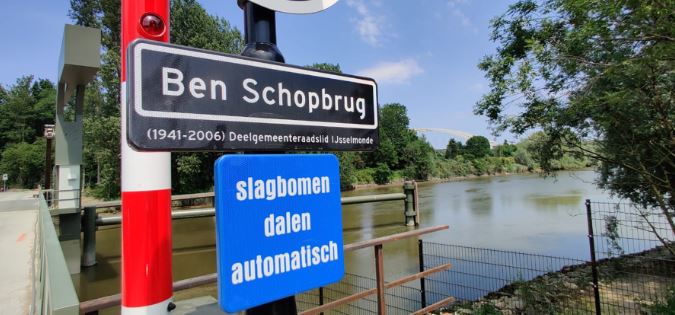The new Ben Schop bridge is fully automated. Since 2021, the Eiland van Brienenoord in the south of Rotterdam has been accessible via a brand new bridge: the Ben Schop Bridge. This bridge is named after Ben Schop: former councilor of the IJsselmonde district. Ben has always argued for a better connection between the island and the ‘mainland’. And now – 15 years after his death – the new bridge is a fact. It is a drawbridge suitable for both slow and fast traffic. Ships can now also pass a lot more easily. We at DWG were allowed to take care of the automation.
One of Rotterdam's newest bridges
Rotterdam has many bridges. They are indispensable and help many people get from A to B every day. Residents, tourists, companies, skippers: everyone benefits from them. One of the newest bridges in Rotterdam is the Ben Schop Bridge. The Municipality of Rotterdam has asked us to take care of the automation of this bridge. We were only too happy to do that!
An on-site look
Meet DWG’ers Peter van Raaij (project leader), Johan Muurling (software engineer) and Jelle Mank (software engineer). They are in the lead of project Ben Schopbrug. We visited them while they were doing I/O testing of the Ben Schop bridge on location. Test, test, test, because the bridge must of course be extremely safe!
Testing and commissioning
First they tested the I/O signals. Are the field components properly entering the inputs and outputs of the control system?
Where necessary, direct adjustments were made to the electrical installation or to the adjustment of the field components.
The I/O test was not successful until all signals correctly arrived at the inputs and outputs. You can think of the position switches of the barriers, shipping signals, land traffic signals, sound alarms and of course the control for opening and closing the bridge.
Commissioning and SAT take-down
They then proceeded to commission the bridge.- They did this together with the bridge keeper and the contractor. The running times of the field components are determined during commissioning and stored in the control system. They then carried out a user test of the operation together with the bridge keeper. This test was completed on the basis of a prepared SAT protocol (Site Acceptance Test). It was tested whether the operation of the control system meets the requirements and wishes of the client. The final bridge operators then received clear instructions and the operating manual was explained.
The bridge was commissioned without a client. The client himself was only involved in going through the SAT administration and then giving his approval with his scribble on the SAT protocol.
The result
The Ben Schop Bridge is currently operated on site, 24/7. Skippers can report their expected arrival time to the bridge keeper one hour in advance. It’s all running smoothly. It has recently become even more efficient, because the bridge can now also be operated from a central point on the Kop van Zuid. That is the added value of automation!
In this type of project it is especially important that all DWG disciplines work well together. A clear structure is indispensable for this. That is why we use the V-model. This V-model consists of a number of steps. Starting with mapping out the specifications and wishes of the customer. Ending at the Factory Acceptance Test (FAT) and the Site Acceptance Test (SAT). After each step, we check whether the outcome matches the wishes and expectations of the customer: in this case the Municipality of Rotterdam.
Getting acquainted? Gladly!
Are you looking for specialists in the field of software or hardware? Or a consultant to help you get to the bottom of your issues? We are happy to listen to your story! Please contact us. Then we can drink a cup of coffee together.



